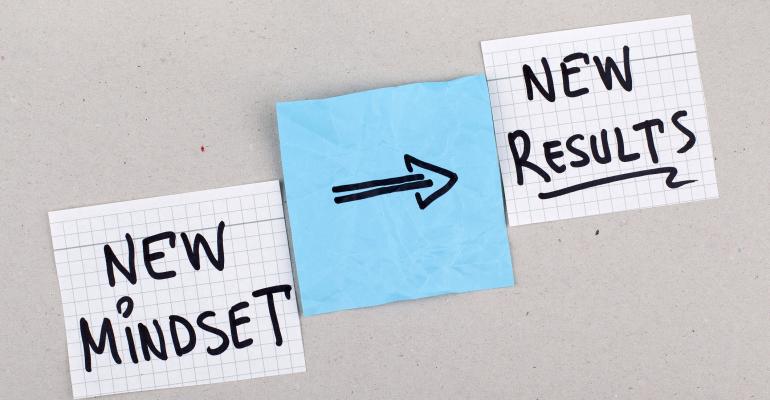Continuing medical educators are in a bit of a quandary. They’re passionate about driving important outcome changes for clinicians and patients, but to make that happen, the learners need to show up. “Your temptation sometimes may be to say…The more credit I can give them, the more likely it is they’ll [participate],” said Accreditation Council for CME President and CEO Graham McMahon, MD, MMSc, at a session at the Alliance for Continuing Education in the Health Professions 2017 Annual Meeting, held in January in San Francisco.
“Of course, that is a totally crazy way of thinking about our system,” he added. “Our system is not about delivering credit. It’s never been about that. Our system is about delivering high-quality learning to drive performance improvement and skill development for every single clinician that we touch, regardless of who they are or what team they work in.”
And yet continuing professional development providers remained challenged by “mandates and obligatory education that drive clinicians to box-check and credit shop,” he said. But if you buy into that and promote educational experiences as high-value credit opportunities, what you attract will be those who would rather sit passively and play on their phones, those who “wait for the credit to be anointed upon them,” as McMahon said—not those who want to learn and improve.
“We are educators, not distributors of credit,” he said. “We have to switch the clinicians’ mindset and create an environment in which they are moving to choose activities based on real needs, [activities] that help them build skills—cognitive, technical, and procedural—[activities] that help them deliver those outcomes, so that they’re not thinking about credit. Credit is a gift to recognize them for their participation in education that we know works.”
Stop Focusing on Knowledge Transfers
These days, all a physician needs to know is likely just a cellphone away. “They can look up guidelines faster than you can whisper in their ears,” said McMahon. “They don’t need information, and if we convey information as the primary currency in our CPD [activities], we’re redundant. They don’t need that.”
What they do need, he said, are opportunities to engage with their peers to solve problems, look at challenging clinical cases and questions, and get feedback. They need to learn new skills and be able to practice them. “Those educational experiences are much harder to produce,” he said, but that’s what today’s clinicians are demanding.
“We have to get away from our tradition of giving credit for one-and-done sorts of activities and assuming that that’s adequate, because if we’re really thinking about educational transformation, we have to be thinking about education that’s just in time—not just in down time.” It has to be about performance change, not just attendance, he said.
Shift Your Mindset
Just as what clinicians need has changed, so has the role of the CPD provider changed from credit distributors to performance-improvement engineers, said McMahon. “And that requires you to shift from thinking of yourselves as documentation managers and bureaucracy controllers to facilitators of awesome education that changes lives. And you can do it,” whatever environment you may work in, be it a medical school, education company, specialty society, or other type of provider.
How? McMahon said to start by thinking in terms of solving problems, not providing updates. For example, instead of the same old annual diabetes update, why not give your learners five challenging cases in diabetes management? “Most of your clinicians can look for updates on diabetes on their phones, but solving problems in diabetes care? That’s a little harder, and it draws a different type of audience, an engaged and curious audience,” he said. It’s important to keep the learning dynamic, active, participatory, and engaging. And while you do give them the ability to earn multiple types of credit, that should not be their main motivation to participate.
The CPD provider’s role is to facilitate mentorship, create performance improvement, focus on skill growth and team support, and promote self-awareness. “Those are skills most of you already have,” he said.
Instead of thinking about putting on a course, assessing it, and fulfilling accreditation requirements, think about creating a continuum of learning. This entails helping your learners identify their needs through self-assessment and understanding local needs, helping them search and find activities that will be relevant for them using tools like CMEFinder.org, engaging them in quality learning, assessing them appropriately, creating opportunities for reflective feedback, and making sure you report the credit earned for your learners so they don’t have to worry about it.
Shift Your Target
“It’s not about attendance or satisfaction. Increasingly, it’s not even about learning [information],” though gains in knowledge are an improvement over assessing learners’ satisfaction levels, said McMahon. Your target now should be helping clinicians introduce a new process of care that includes intermediary checkpoints that allow you to assess how that process is working, and, if possible, developing longer-term relationships with learners so you can look at patient outcomes over time via electronic medical records.
McMahon quoted John F. Kennedy, saying, “If not us, who? If not now, when?”
“The system needs you,” he said. “The more you can deliver, the easier it is for me to convince [healthcare leaders about the value of what you do so they will] give you the support you need to do more of [your work].”
Note: This is an excerpt of a few of the highlights of one section of one of the 10 presentations ACEhp made available for virtual attendees of the 2017 Annual Conference. To purchase recordings and slides for all the virtual conference sessions—$100 for members, $159 for nonmembers—visit ACEhp.org.





